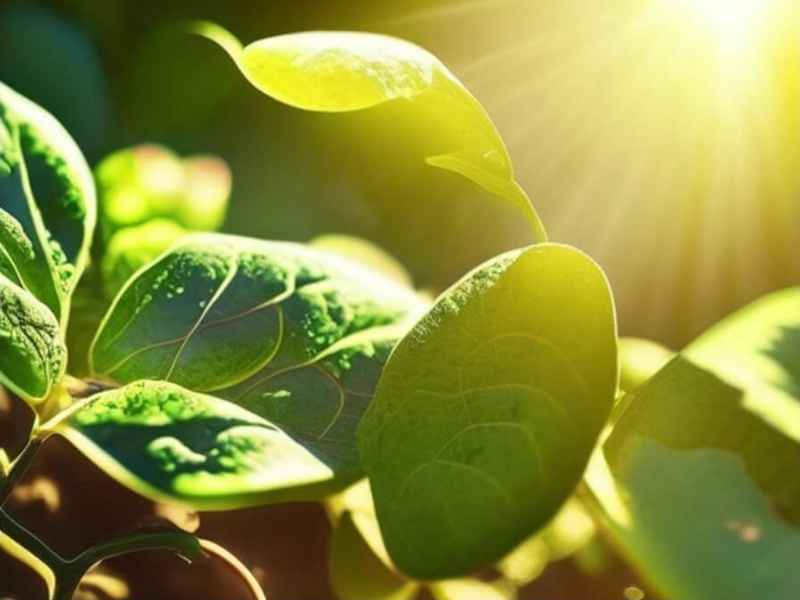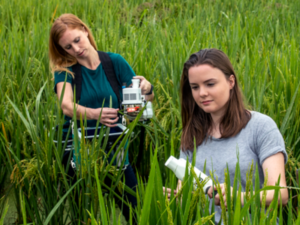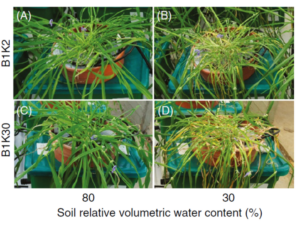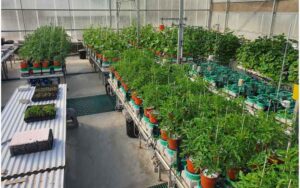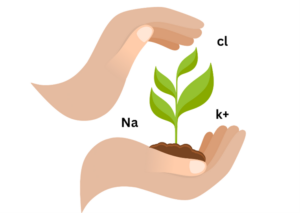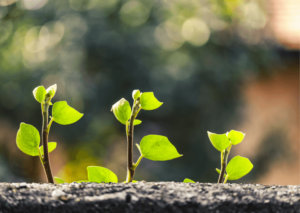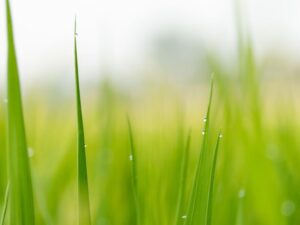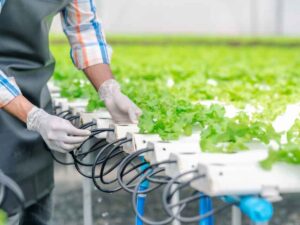Abiotic stress in plants refers to the adverse effects caused by non-living environmental factors on their growth, development, and overall well-being. Unlike biotic stresses that arise from living organisms like pests and diseases, abiotic stresses result from various physical and chemical factors present in the plant’s surroundings. These stresses can severely impact plant health, productivity, and even survival.
Several common types of abiotic stress include:
Drought Stress: Lack of water availability due to inadequate rainfall, improper irrigation, or excessive evaporation can lead to drought stress. It disrupts the plant’s water balance, impairs nutrient uptake, and affects photosynthesis, leading to reduced growth and wilting. Plants respond to drought stress through various mechanisms like closing stomata, producing stress-related proteins, and altering root morphology to enhance water absorption
Temperature Stress: Extreme temperatures, both high and low, can disrupt biochemical processes in plants. Heat stress can cause protein denaturation, membrane damage, and oxidative stress. Cold stress can lead to cellular dehydration, ice crystal formation, and disrupted cell membranes. Plants may respond to temperature stress by producing heat shock proteins or antifreeze proteins, depending on the stress type.
Nutrient Deficiency or Toxicity: Insufficient or excessive availability of essential nutrients like nitrogen, phosphorus, potassium, and micronutrients can negatively impact plant growth and metabolism. Nutrient deficiencies can lead to chlorosis (yellowing of leaves) and reduced yield, while toxic levels of certain elements can cause tissue damage and even death.
Heavy Metal Stress: Soil contamination with heavy metals like lead, cadmium, and mercury can be toxic to plants, affecting nutrient uptake and overall physiological functions. Some plants have developed mechanisms to tolerate or exclude heavy metals from their tissues.
Oxygen Deprivation (Flooding or Waterlogging): Prolonged periods of waterlogging or flooding can reduce oxygen availability to plant roots, leading to anaerobic conditions. This hampers root respiration and nutrient uptake and can ultimately lead to cell death.
UV Radiation Stress: Ultraviolet (UV) radiation can cause DNA damage, disrupt photosynthesis, and generate reactive oxygen species. Plants respond by producing UV-absorbing compounds and enzymes that repair DNA damage.
Wind Stress: High winds can damage plant structures, break branches, and cause mechanical stress on stems and leaves. Wind can also increase transpiration rates, leading to water loss and dehydration.
Salinity stress in plants
Salinity stress, a significant abiotic stressor, poses a substantial threat to plant growth, development, and agricultural productivity worldwide. It occurs when the concentration of salts, primarily sodium chloride (NaCl), exceeds the tolerable levels within the soil, compromising plant health and reducing crop yields. This phenomenon is particularly prevalent in arid and semi-arid regions, where high temperatures and limited water availability contribute to the accumulation of salts in the soil. Understanding the complexities of salinity stress and the diverse adaptations plants employ to cope with this challenge is crucial for sustainable agriculture and ecosystem management.
Osmotic Imbalance: A Struggle for Water
At the heart of salinity stress lies a battle for water. Plants, inherently reliant on water to support vital functions, experience a cruel paradox as they encounter salt-laden soil. The excessive presence of salts creates an osmotic imbalance that impedes the plant’s ability to absorb water through its roots. This unrelenting thirst, brought on by osmotic stress, results in wilting, stunted growth, and a perpetual struggle to maintain cell turgor pressure. As water becomes an increasingly scarce resource due to salt-induced water potential shifts, plant cells become parched and the prospect of healthy growth recedes.
Some salt-tolerant plants are adept at adjusting their osmotic potential to counter the effects of osmotic stress caused by the high salt concentration in the soil. They accumulate compatible solutes, such as proline and glycine betaine, in their cells, which help maintain cellular water balance and prevent water loss.
Ion Exclusion and Tissue Tolerance: The assault of salinity stress extends beyond water imbalance, encompassing the very nutrients that sustain plant vitality. Sodium and chloride ions, dominant components of salt stress, infiltrate plant roots alongside essential nutrients like potassium, calcium, and magnesium. However, the excessive influx of sodium disrupts the delicate balance of these essential ions, rendering nutrient uptake mechanisms inoperative. Potassium, a pivotal player in enzyme activation and stomatal regulation, is particularly susceptible to interference by sodium ions. The disruption of nutrient balance cascades into a series of physiological disturbances, compromising cell membrane integrity and hindering metabolic processes.
Certain plants possess the ability to selectively exclude sodium and chloride ions from entering their roots. This exclusion mechanism prevents the accumulation of toxic ions in the aerial parts of the plant. Additionally, plants with high tissue tolerance can sequester and compartmentalize excess salts in specific cells, reducing their impact on essential cellular processes.
Roots: The roots of plants, serving as their lifeline to nutrients and water, are deeply impacted by salinity stress. In a bid to combat the detrimental effects, some plants undergo alterations in root architecture. Deep-rooted plants extend their search for water to lower soil layers with lower salt concentrations, while others develop an extensive network of shallow roots to access water from a larger soil volume. However, these adaptations come at a cost, diverting energy and resources away from above-ground growth and reproductive processes.
In response to salinity stress, plants can modify their root architecture to enhance water and nutrient uptake. Some species develop deeper root systems, allowing them to access water from lower soil layers where salt concentration is relatively lower. Others develop a shallower but extensive root network to maximize water absorption from a larger soil volume.
Cellular and Membrane Disruption: Salinity stress disrupts the very fabric of plant cells, leaving an indelible impact on their structural integrity and functionality. The influx of sodium and chloride ions into the cells triggers an array of physiological responses, including the generation of reactive oxygen species (ROS). ROS, though essential in signaling and stress responses, become destructive when produced in excess. They instigate oxidative stress, leading to lipid peroxidation and membrane damage. As cell membranes falter, they lose their selective permeability, crucial for maintaining ion homeostasis and protecting cells from the toxic effects of salts. This membrane turmoil further compounds the challenge of salinity stress, fueling a vicious cycle of disruption.
Understanding the intricacies of salinity stress is pivotal for developing strategies to enhance plant resilience and mitigate its impact on agricultural productivity. Researchers are actively engaged in deciphering the genetic and physiological mechanisms that underpin plant responses to salt stress. This knowledge serves as a foundation for breeding salt-tolerant varieties and implementing sustainable agricultural practices that can combat the detrimental effects of salinity stress, contributing to global food security and ecosystem health.
Salt Glands, Trichomes, and Genetic Adaptations: Nature’s Arsenal Against Salinity Stress
In the unending struggle for survival, plants have evolved an astonishing array of adaptations to cope with the relentless challenges posed by salinity stress. Among these adaptations, salt glands, trichomes, and genetic changes stand as testaments to the intricate strategies nature employs to navigate hostile environments. Together, these mechanisms reveal the remarkable resilience and versatility of plants in the face of adversity.
Salt Glands and Trichomes: Specialized Defenses Against Excess Salts
In the battle against salinity stress, some plants have devised specialized structures to excrete excess salts or minimize their internal accumulation. Salt glands, tiny structures found on the surface of leaves or stems, serve as the plant’s own purification system. These glands actively transport salt ions out of the plant, depositing them on the leaf surface where they can be washed away by rain or irrigation. This extraordinary mechanism not only prevents the toxic buildup of salts within the plant but also contributes to the creation of salt crusts on leaves, acting as a barrier that shields the plant from further salt absorption.
Similarly, trichomes, small hair-like structures on the surface of leaves, play a pivotal role in salt tolerance. Some trichomes are known to excrete excess salt, enabling the plant to maintain a healthier internal sodium balance. Moreover, these trichomes can also reduce water loss through transpiration by creating a microenvironment that reduces air movement and minimizes water vapor loss. This dual function showcases the ingenious ways in which plants can multitask their adaptations to not only cope with salinity stress but also optimize water conservation in arid conditions.
Genetic Adaptations: The Blueprint for Salt Tolerance
While salt glands and trichomes are remarkable architectural responses to salinity stress, genetic adaptations at the molecular level lay the foundation for a plant’s ability to withstand this adversity. Plants have the innate ability to modulate their genetic expression in response to stress signals, activating specific pathways that help them endure harsh conditions. Some plants naturally possess genes that enhance their salt tolerance, while others may acquire these genes through evolutionary processes or horizontal gene transfer.
Certain halophytic plants, like seagrasses, mangroves, and some varieties of barley and quinoa, have naturally evolved genetic endurance to salt stress while Many common crops, such as wheat, rice, and most varieties of tomatoes, possess limited genetic endurance to salt stress. These plants are highly sensitive to elevated salt levels, resulting in reduced growth, diminished yields, and overall compromised health. Enhancing their salt tolerance through genetic modifications is a critical avenue for bolstering their resilience in saline environments.
Genetic adaptation involves a delicate interplay between various genes responsible for ion transport, osmotic regulation, and stress response. For instance, genes encoding transporters like the SOS1 gene are instrumental in regulating sodium ions’ movement within the plant. This gene actively exports sodium ions out of the cell, reducing the toxic load and maintaining a healthier ion balance. Furthermore, the activation of transcription factors like DREB2A enables plants to regulate stress-responsive genes, activating protective mechanisms such as the synthesis of osmoprotectants and antioxidants that combat cellular damage.
While salt glands, trichomes, and genetic adaptations function independently, their interactions create a combination of responses that enable plants to thrive in saline environments. For instance, plants equipped with salt glands and trichomes not only excrete salts but also mitigate water loss, a dual strategy that maximizes the effectiveness of their adaptive arsenal. Similarly, genetic adaptations work in tandem with these structural defenses. Genetic modifications that enhance ion transport and regulate stress-responsive genes complement the functions of salt glands and trichomes, ensuring a comprehensive defense against salinity stress.
The insights gained from understanding these adaptations not only deepen our appreciation for the intricacies of plant survival but also hold profound implications for sustainable agriculture and environmental management. By unraveling the molecular underpinnings of genetic adaptations, and with the help of advanced technologies, scientists can identify key genes that confer salt tolerance. Genetic engineering techniques offer the potential to introduce these genes into crops, producing varieties that thrive in saline soils and bolstering food security in regions prone to salinity stress.
How can you find the best salt tolerant plant within your experiment?
In the quest to address the pressing global issue of salinity stress and its impact on agriculture and food security, researchers are continually seeking innovative solutions to identify and develop salt-tolerant plant varieties, such as the PlantArray. the platform is a cutting-edge technology that upgrades the way researchers pinpoint the best salt-tolerant plants.
At the heart of the PlantArray system lies its ability to capture the plant responses to salinity stress in a rapid and high-throughput manner. Traditional methods of phenotyping, which involve observing and measuring plant characteristics manually, can be time-consuming and subject to human bias. The PlantArray system, however, transcends these limitations by automating the process and simultaneously evaluating numerous plants under controlled conditions, and by that getting accurate results throughout the experiment.
In concert with the PlantArray, the SPAC (Soil-Plant-Atmosphere-Continuum) Analytics introduces a cloud-based software solution designed to redefine how real-time statistics, analysis, and productivity forecasting are conducted in the agricultural research field. This innovative software offers a platform that empowers agro-researchers to extract meaningful insights from a multitude of data from their experiments.
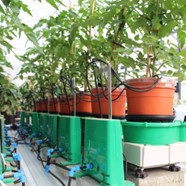
Sounds interesting? you can browse our scientific articles by clicking this link: https://www.plant-ditech.com/references/academic-articles
Or if you would like to know how our solution can fit to your research purposes, click on the tab on the right side on the page and we will get back to you shortly!

